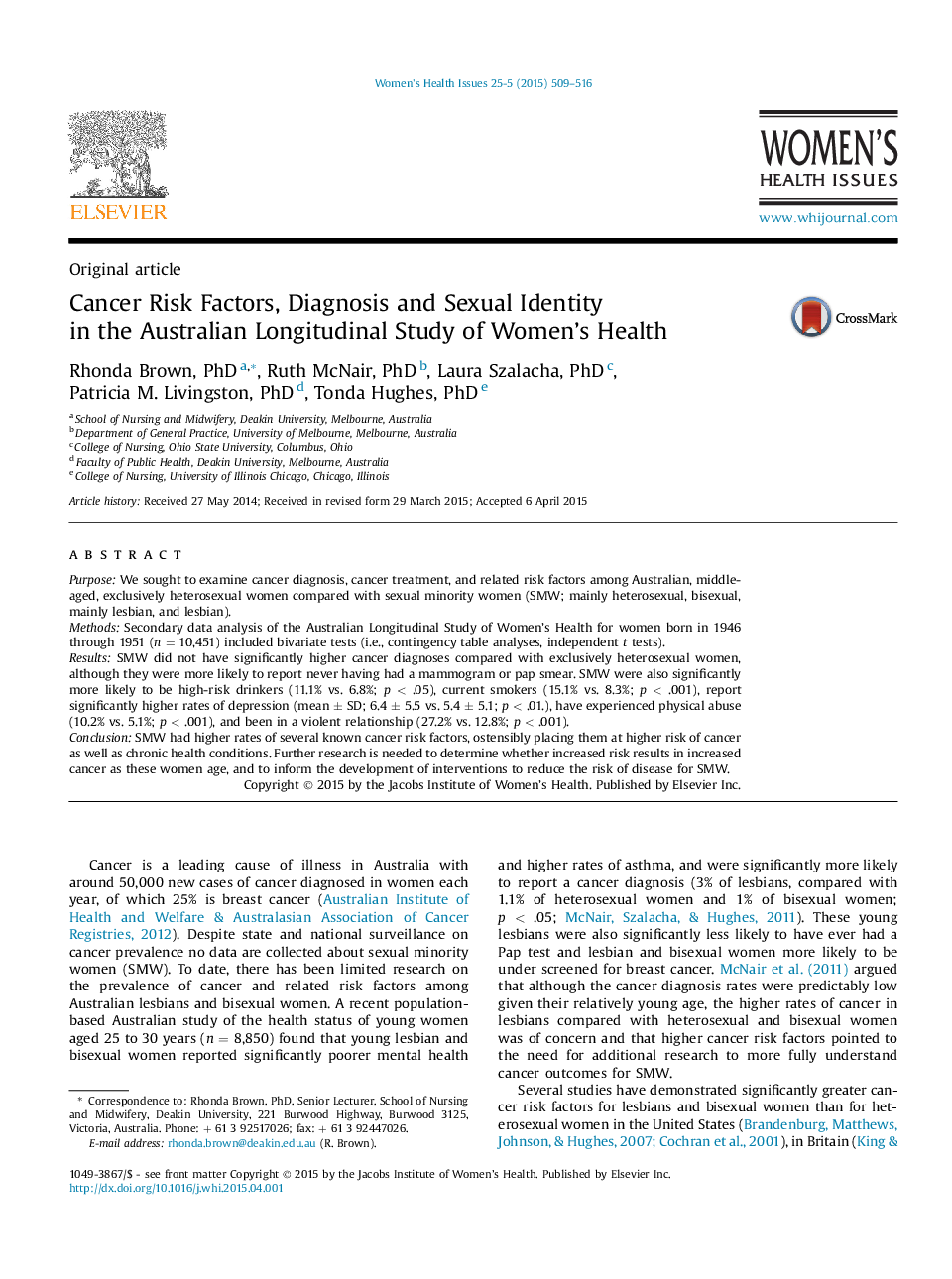| Article ID | Journal | Published Year | Pages | File Type |
|---|---|---|---|---|
| 1092888 | Women's Health Issues | 2015 | 8 Pages |
PurposeWe sought to examine cancer diagnosis, cancer treatment, and related risk factors among Australian, middle-aged, exclusively heterosexual women compared with sexual minority women (SMW; mainly heterosexual, bisexual, mainly lesbian, and lesbian).MethodsSecondary data analysis of the Australian Longitudinal Study of Women's Health for women born in 1946 through 1951 (n = 10,451) included bivariate tests (i.e., contingency table analyses, independent t tests).ResultsSMW did not have significantly higher cancer diagnoses compared with exclusively heterosexual women, although they were more likely to report never having had a mammogram or pap smear. SMW were also significantly more likely to be high-risk drinkers (11.1% vs. 6.8%; p < .05), current smokers (15.1% vs. 8.3%; p < .001), report significantly higher rates of depression (mean ± SD; 6.4 ± 5.5 vs. 5.4 ± 5.1; p < .01.), have experienced physical abuse (10.2% vs. 5.1%; p < .001), and been in a violent relationship (27.2% vs. 12.8%; p < .001).ConclusionSMW had higher rates of several known cancer risk factors, ostensibly placing them at higher risk of cancer as well as chronic health conditions. Further research is needed to determine whether increased risk results in increased cancer as these women age, and to inform the development of interventions to reduce the risk of disease for SMW.
